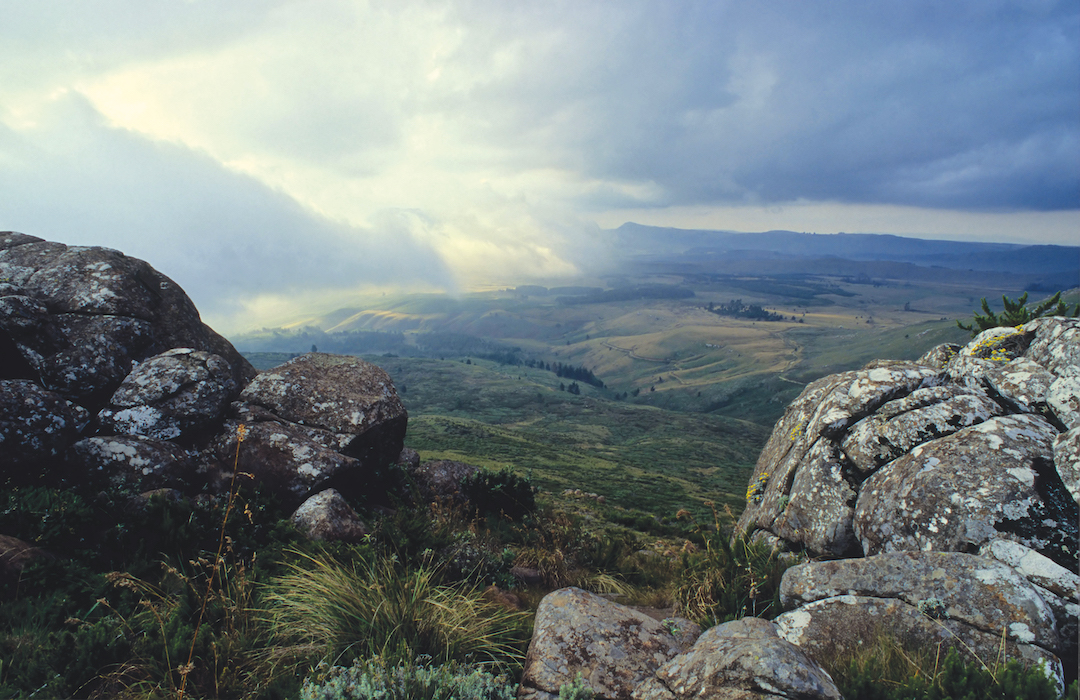We visited the hamlet of Hogsback, unquestionably one of South Africa’s prettiest villages, deep in the Eastern Cape Amatola Mountains.
Originally a hill station used by missionaries, soldiers and teachers seeking relief from the summer heat, today the small community is popular with artists and academics, eco-warriors and nature-lovers, hippies and eccentrics.
Hogsback village consists of just a single stretch of tar with a few shops and cafés, a supermarket petrol pump, and some galleries. Mostly rural, Hogsback also spreads out into farms or large plots of land with vast gardens encroached by jungly indigenous forest.
Head into the forests
It’s the forests that most people come for. As soon as you’ve picked up a map (which is also your required hiking permit) from the Visitors’ Information Centre, you’re set to take off into the cool, soothing shadow world of towering sentinels, ancient yellowwoods, gnarled branches and knotted vines. Within, crystal-clear streams churn over moss-covered rocks, twisting through fern gullies, while waterfalls cascade overhead. Go with a guide if you want to find hidden viewpoints and make sure you get to the Madonna and Child waterfall, where you can abseil down the 35-metre rockface.

Visit the gardens
And when your adrenaline has settled, there are quieter pursuits. There are pretty gardens (20 acres of azaleas, birches, rhododendrons and bulging flower beds) at The Edge, a hotel with its own eleven-circuit labyrinth. Its intricate design is similar to the labyrinth at Chartres Cathedral in France and, with a 700-metre pathway to the centre, it’s among the world’s biggest. Down the road from The Edge is another Hogsback original, a kind of immersive open-air sculpture gallery known as the Eco-Shrine. Created by artist Diana Graham and the late Hogsback artisan, Dagamnyama Wara, it features cement sculptures decorated with relief paintings and ‘windows’ framing magical views of the valley and of the three hog-shaped Hogsback mountains in the distance.

Eat, eat, eat
You can taste the local ale, made with mountain spring water, at the Hogsback Brewing Company, where there are also cheese platters, light meals and gin cocktails. Happy Hogs is a laidback restaurant with a fireplace and hot soup that will warm the body after time in the chilly forests. You can also curl up in front of a blazing fire in the bar at the Hogsback Inn, the village’s oldest hotel, or tuck into pizza at Away with the Fairies, a sociable backpackers.

The Tolkien connection
Lord of the Rings author J.R.R. Tolkien was born just before the turn of the last century and moved to England before he was five years old. While here, he lived in Bloemfontein. In some biographies, there are references to Tolkien being sick as a lad – physicians advised his father to take him to the mountains. That’s the only clue that he might have spent some time in Hogsback. Bloemfontein has no mountains and in those days there was a train journey that Tolkien’s family might have taken to Cathcart, from where buggy transfers were available for the onward journey to Hogsback. It’s a slim premise upon which to base the idea that the forests and mountains hereabouts were inspiration for the realms he described in his books.
Words: Keith Bain | Images: Courtesy







